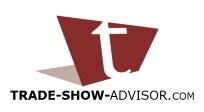How to Beat the Competition and Achieve Strong Tradeshow Results
Follow-up is Essential for Tradeshow Results
What happens at the tradeshow is obviously important to your success. Yet, equally important is what happens after the show ends: Follow-up. This is where most exhibitors bunglel. To realize the benefits from all the planning and effort that went into exhibiting, you must ensure that appropriate follow-up activities take place.
Follow Up Begins Before the Show
Research shows that over 80% of leads gathered at tradeshows are never used for followed up initiatives. Why do the majority of leads sit dormant? It's because many professionals may have the misconception that leads garnered at a show are not terribly important or viable. Moreover, hectic work schedules get in the way and other activities take priority over lead follow-up.
Even if the salespeople do follow up, there's only so much they can learn from a business card or bare bone information. For salespeople to view leads as being worthwhile for follow-up, they need quality information.
For this reason, it is vital that before the show you spend time going over the lead collecting process to ensure tradeshow results.
- Clarify exactly what types of information should be recorded on lead cards.
- Explain the importance of the information you are gathering.
- Make sure everyone knows exactly how to operate and complete fields in your lead software, card readers, and lead cards.
Additionally, everyone working the show should know exactly what tradeshow results you want to achieve. Each show should have its own set of specific, clear, quantifiable, realistic goals.
These goals should be in line with your company’s overall marketing objectives.
They give staffers something to strive for and serve as benchmarks to evaluate and measure team and individual performance.
Develop a Follow-Up System
To achieve and perhaps surpass your specific goals for tradeshow results, you need a follow up system. The best time to develop your follow up system is during the planning and training stages.
Use this time prior to the show establish how the leads will be handled. For example, select a team member to take responsibility for collecting all "hot" leads at the end of each day and overnight them to the home office for immediate processing.
Assign someone at the home office as a “follow-up” manager. This person takes charge of the entire follow-up process and should be someone who does not attend the show. Their job is to carry out the follow-up system that was established before the show.
Timeliness is of essence with all leads, not just the "hot" ones. Obviously you're not going to overnight every single lead back to the home office, but there are steps you can take to ensure you stand out from the crowd of exhibitors.
It is important to send something, such as a letter, email, or broadcast fax, to everyone who came by the booth to thank them and let them know when they can expect to hear from your company again. This should be done within three to five days after the show.
Remember, if you don't follow up, your competitors will. And they will get the tradeshow results you sought.
The Next Step: Accountability
Use contact management database programs to ensure your sales staff get leads that are as complete and useful as possible. Then, after leads are distributed, hold your account representatives responsible for the results.
There should be a written progress report from each salesperson at regular, predetermined intervals. This information can be used to track their performance, sales made, etc.
Some companies use performance in lead follow up as one factor in a salesperson's annual performance review. Knowing that they will be held accountable for results is a powerful motivator.
Measuring results
At the end of the day, management wants to know their money was well spent and you have tradeshow results to prove it. Keeping track of your leads will allow you to measure sales directly attributable to your tradeshow participation. Recording this data will allow you to provide qualitative and quantitative analysis of the show.
For example, you can calculate the return-on-investment to demonstrate to management the effect tradeshows have on the bottom line. To measure the cost per tradeshow lead, simply divide your total show expenditure by the number of leads gathered. To measure the cost per sale, divide the total show expenditure by the number of sales.
Qualitative data, such as types of prospects who visited the booth, dates and times of their visit, products/services of interest, buying intent, and results of any pre-show promotional activity often proves invaluable when planning future show participation.
The key to achieving exhibiting results is wrapped up in the lead management process. It starts with knowing at the outset what you want to achieve, then continues through establishing a strategy that is user-friendly, and finally the actual follow-up operation leads to bottom-line profitability.
______
This article on achieving tradeshow results was written by Susan A. Friedmann, CSP, The Tradeshow Coach
Related Information - Tradeshow Results
Evaluating Tradeshow ROI
Tips on Show Selection
Effective Lead Generation at Shows
Before You Go: Trade Show Check List
How to Schedule Staff
Trade Show Mistakes
Share Success Tips Do you have a great exhibiting or marketing tip that enhanced
your trade show results? Share it here! |



